The first SATA III drives
The SATA III standard was released in Q2 of 2009 with a top speed of 6Gb/s which, in the real world, means about 550MB/s after the the encoding and protocol overheads are taken into account.
The first chipsets to support it were released in the form of AMD’s SB850 south bridge in Q1 of 2010 with the introduction of their AM3 platform. Their marketing used the 3-3-3 slogan for DDR3, USB3 and SATA3 support. Intel followed suit a year later with their Sandy Bridge CPUs in Q1 of 2011 and the bundled 60-series PCHs. There were some Intel motherboards in 2010 for their lga1156-based CPUs that utilized an external PCIe-based SATA III controller that was integrated onto the board, such as the Maximus IV Extreme, but even when they had native support, this carried on for two more years, as they only added two SATA III ports, the rest were only capable of SATA II speeds.
So with that in mind, let’s see what one of the earliest SATA III drive was capable of. The crown goes to the Crucial C30010, which was released in Q2 of 2010, so before Intel had integrated SATA III into their chipsets. This means that most people would have used it with an external controller, probably in the form of an add-on card. The largest, 256GB variant was rated at 355/215MB/s and 45,000 random 4k IOPS11, which is well beyond the 270MB/s limit of SATA II, but nowhere near the limits of SATA III. The 64GB variant was limited to a write speed of 75MB/s and 15,000IOPS12, which is a very significant difference. Newer drives do still have varying speeds depending on the capacity, but the difference is usually not as big between the smallest and largest available capacities. The price for the 64GB model was $140, while the 128 and 256GB models came in at $370 and $660, respectively13.
The drive itself is based on 34nm MLC NAND with 128MB of DDR3 RAM with an 8-channel dual-core Marvell 88SS9174-BJP2 controller. There are 16 NAND packages for all capacities, but a differing number of dies in each NAND package. The 64GB version used one 4GB die per package, whereas the 256GB version had four of them. The drive uses around 7% of the NAND for over-provisioning, that is, to replace bad or corrupt NAND cells/blocks. What’s noteworthy is the use of BGA packaging for the NAND chips. This is possibly due to the increased number of dies inside each package, as they needed more pins to communicate with the controller.
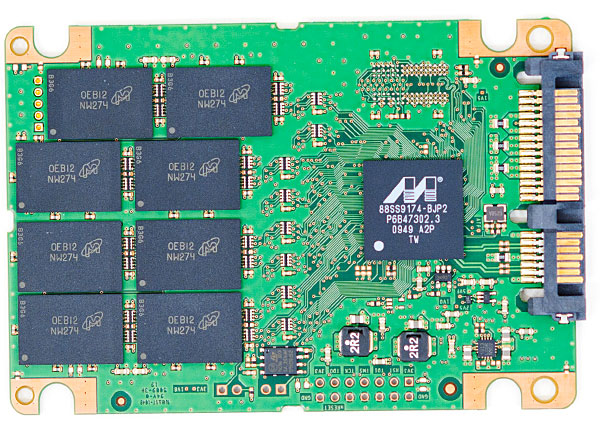
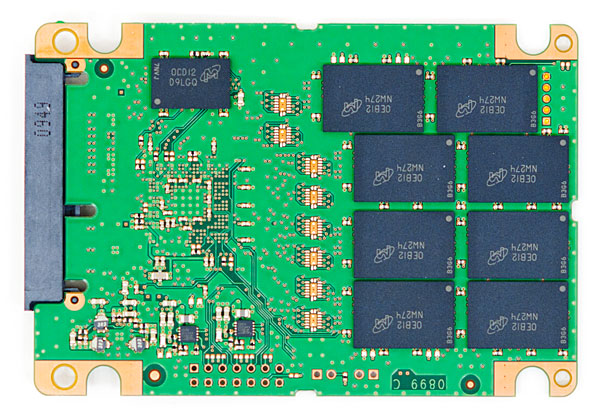
Just a year later, in Q2 of 2011, the Corsair Force GT was released. This utilized the then de facto SandForce SF-2282 with 8 channels, boasting speeds of up to 555/525MB/s and 85,000IOPS for the largest, 240GB and 500/450MB/s14 for the 120GB model. The NAND is manufactured at 25nm and uses MLC technology. This controller was one of the most widely used controllers at the time, almost every manufacturer built drives using it and they looked pretty much exactly the same inside. It was also cost-effective, as it did not use an additional DRAM chip for caching, simplifying the design and lowering the manufacturing costs. The maximum capacity it could support was 512GB and it could use both SLC and MLC NAND15. Let’s see how Corsair’s implementation looked like.
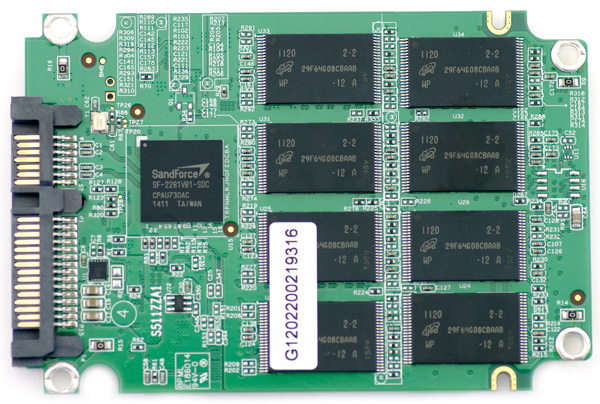
The PCB is very simple, the other side contains 8 more identical Micron NAND chips, these are 8GB each for a total of 128GB raw and 120GB useable capacity. There is no DRAM chip or anything else of interest on the PCB. Pretty much all drives based on this controller followed the same layout.
Fast forward a year and meet the Corsair Neutron GTX. I’m intentionally using a Corsair drive again and not because I want to skew the image, but because there were only a few SSD controllers out there and regardless of the manufacturer, they all performed within 5-10% of each other. This drive uses an LAMD controller, which was only found in one other drive, the Seagate 600, a year later.
The Neutron GTX was available in sides up to 480GB and used 1MB of DDR3 cache for every GB of raw capacity. Pricing was at $130/$225/$455 for the 120/240/480GB capacities respectively. Rated at 555/511MB/s and 90K IOPS, this was a little faster than the SandForce-based drives of yesteryear, but the jump wasn’t really significant in sequential speeds, it was most prominent in 4K random reads and writes. Compared to the Corsair Force GT, this was twice as fast in 4K reads, 40 vs 80MB/s and noticeably faster in 4K writes at 200 vs 250MB/s16.
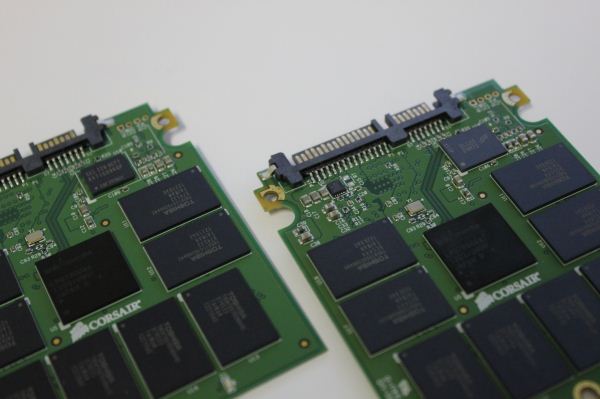
The PCBs are identical, the only visible difference is the physically smaller DRAM chip on the 120GB model. The MLC NAND is manufactured at 24nm by Toshiba and the packages each contain two and eight 8GB NAND chips for the 120GB and 480GB drives respectively. This clearly illustrates that while the physical packages look identical for the two capacities, there are a differing number of NAND dies inside. The PCB is actually a bit shorter than the aluminium enclosure of the drive, hence you don’t see the cutouts on the side for the screws on the far side of the drive, away from the SATA port.
The other drive based on this controller was the Seagate 600 and 600 Pro17. I thought I would include them because they unlike the identical SandForce drives, these look very different from the Neutron GTX. They are enterprise drives, with the Pro version having added capacitors for power loss protection, as well as versions with more over-provisioning at 100GB, 200GB and 400GB capacities.
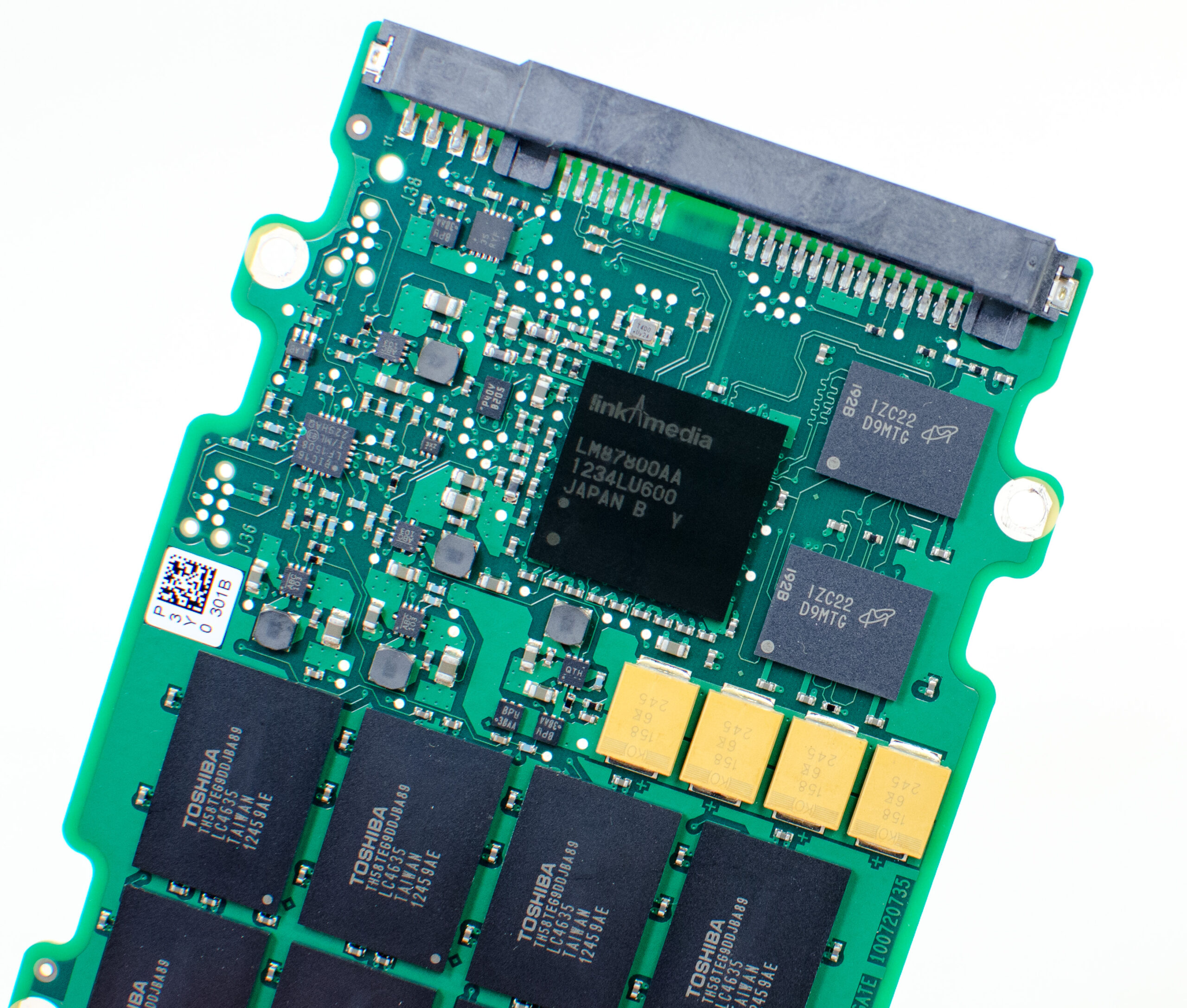
Those are four yellow capacitors, significantly smaller than what the Samsung SS805 needed. Drives have not only gotten much faster in three years, but also more power-efficient. The more advanced manufacturing technologies mean that the flash memory needs less power to be written to while also supporting higher transfer rates on a per-die basis.
The Samsung 840 Pro. This was the gold standard when it was released in Q3 of 2012. Using Samsung’s 21nm MLC NAND, paired with their own MDX controller and 512MB of 1066Mhz LPDD2 memory for 512GB, this was an all-Samsung drive, yet again. The CPU had three 300Mhz Arm Cortex R4s cores to do all the heavy lifting. It was rated at 510/450MB/s and 100K IOPS, but it was faster than that at 492MB/s writes and topped nearly all the charts. Your wallet also had to top the charts, as they were priced at an eye-watering $100/$160/$270/$600 for the 64-512GB capacities.
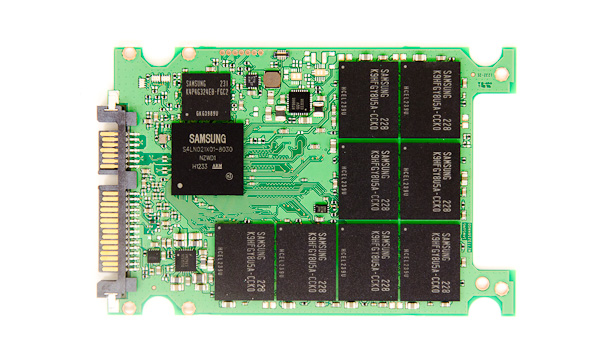
The internals are exactly what one would expect from an 8-channel controller, just laid out a bit differently from the drives we’ve seen previously.
Intel’s Enterprise drives, the SSD DC series
This is when Intel first announced its enterprise SSDs, the Intel SSD DC S3X00 series. These are high-endurance SATA SSDs meant for datacenters and feature power loss protection and a fair amount of over-provisioning. All models feature planar MLC flash with the exception of the S3520 series that uses 32-layer 3D MLC NAND. The S3700/3710-series has the highest endurance in the lineup while the S3610 is in the middle and the S3500/3510/3520 is the “low end”, but it’s a low end enterprise drive, which still puts it ahead of every single consumer drive. The third digit in the model number denotes the generation, but it’s a bit misleading, as there is no S3600 or S3720, only the numbers I listed above.
The above is a 200GB S3700, another 8-channel design with Intel’s own controller. What’s interesting about the drive is that it uses a variety of NAND packages of different sizes. To be exact, it is 14 x 16GB + 32GB + 64GB, which adds up to 320GB of raw capacity, so the over-provisioned area is 60% of the useable capacity, or 37.5% of the total flash memory of the drive.
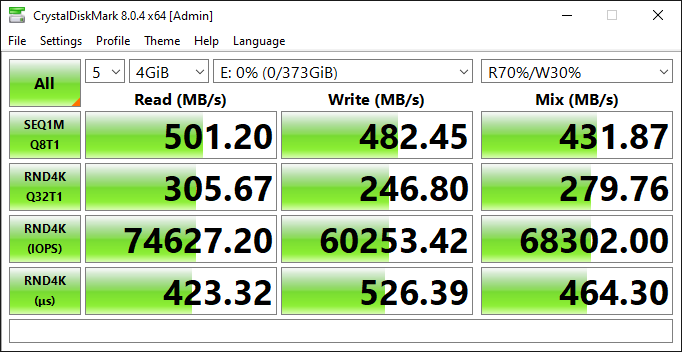
The above was ran on a 400GB variant of the S3700, which shows that it’s a very decent drive. The S3520, the only 3D NAND variant in the lineup is a little slower, but still quite decent, the below shows its measured speeds:
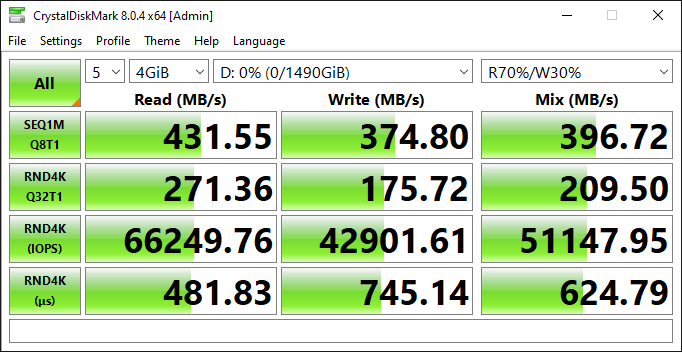
I did not find an image of the internals of this specific drive and I didn’t want to take apart my own, as the screws are covered by the sticker, but I did find pictures of the internals of an S3510, which I think is going to be very similar.
Unfortunately, the labelling on the NAND packages isn’t quite as straightforward, but 14 of the 16 packages appear to be of a similar capacity, while the last two are both different from the rest, as well as each other. The most noticeable difference is the switch to SMD capacitors from the two cylindrical through-hole models from the S3700. You’ll also notice the Micron-labelled flash, but that’s because Intel and Micron had a joint venture for NAND flash manufacturing, called IMFT, which split up in 2018. All of these drives used Intel’s in-house controllers and flash, although some did utilize DRAM from other sources, such as Samsung or Micron. Thus, Micron-branded flash is technically in-house as well.
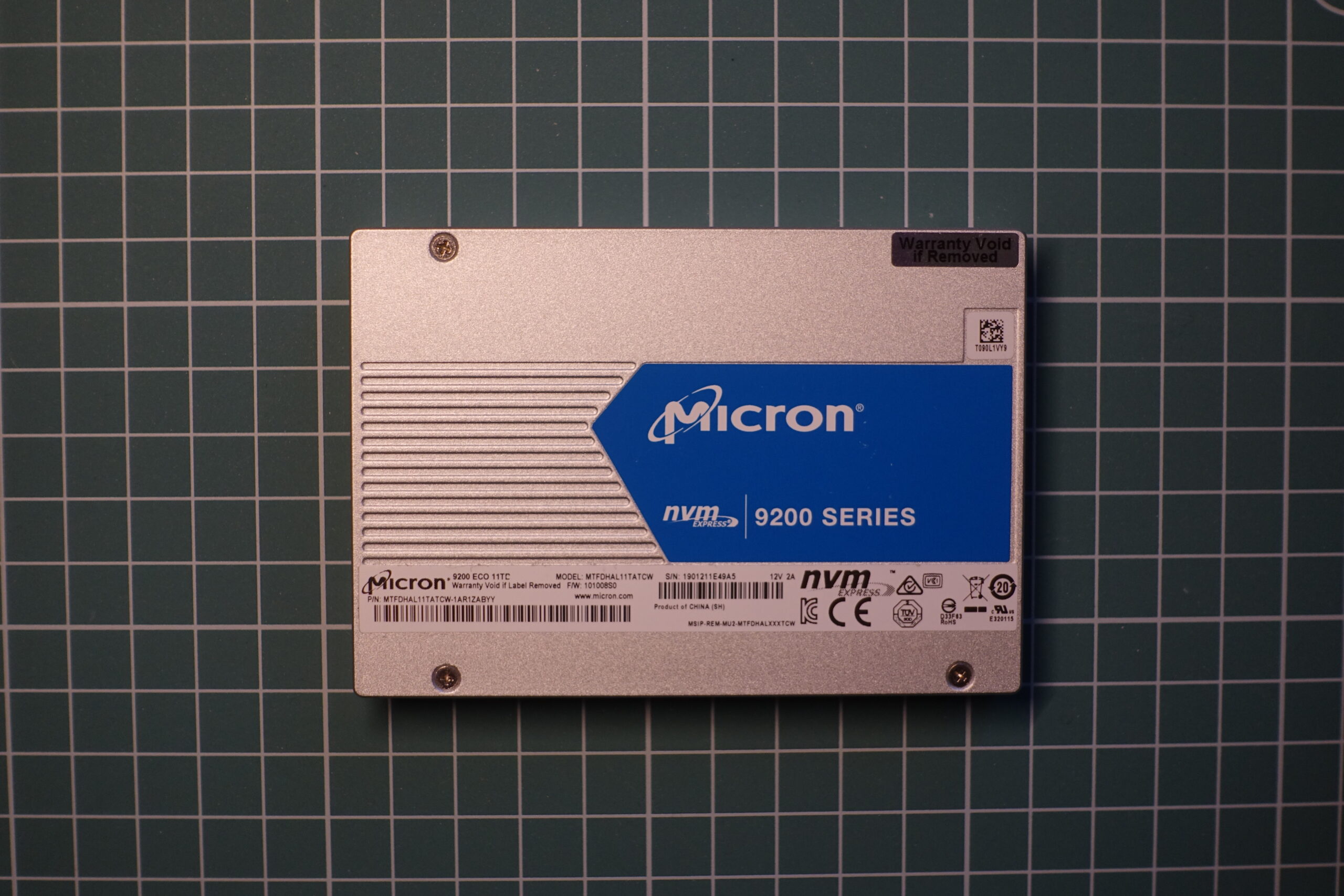
Leave a Reply